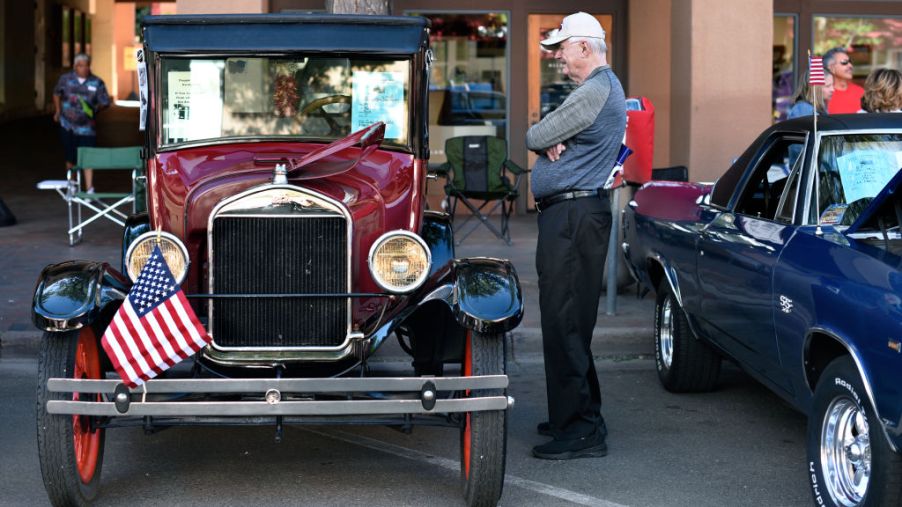
How Much Money Did the Ford Model T Cost
When most people think about the history of the automobile, they commonly think of the Ford Motor Company. However, the Duryea Motor Wagon Company was the first automobile manufacturer in the United States. It was founded in 1893 by two brothers named Frank and Charles Duryea in Springfield, Massachusetts.
The first Duryea Motor Wagon cost approximately $1,500 back then which is equivalent to $43,000 in 2020. For that price, you could buy a BMW 340i. Considering the average American only made between $38 and $139 a month, the first few generations of automobiles were more or less luxury items only the rich could afford. That is until the Ford Model T came along.
Introducing the Ford Model T: America’s first affordable car
Starting October 1, 1908, the Ford Motor Company began production of the Model T (also called the Tin Lizzie or Leaping Lena). Rather than individually handcrafting each car, Ford developed an efficient fabrication method known today as assembly line production which helped reduce its price somewhat compared to other vehicles of the time.
Nonetheless, the Model T was still relatively expensive and rare at the beginning since a lot of the assembly was initially done by hand. This slow and tedious method of production led to only 11 Model Ts during the first month of operation at the Ford Piquette Avenue Plant.
With demand for the Ford Model T increasing exponentially, Henry Ford began using a growing number of machines to reduce the complexity of manufacturing according to Encyclopedia Britannica. With more machines came the need to move the assembly line to the larger 102-acre Highland Park Plant which included offices, factories, a power plant, and a foundry.
The Highland Park Plant is still an iconic symbol of the rigidity of the first-generation assembly line production as compared to the flexibility of modern-day mass production.
Before the move to the Highland Park Plant, it took around 12 and a half hours to produce a single Ford Model T. By 1914, it only took a total of 93 minutes to assemble each vehicle — a Ford Model T coming off the assembly line every three minutes.
That same year, the Ford Motor Company produced more cars than all other automakers in the United States combined. Within a few years, Henry Ford’s Model T comprised half of the vehicles on the road in the world.
By 1925, Ford was manufacturing two million vehicles annually (9,000 to 10,000 cars a day) with a price tag of $260. Amazingly, Ford vehicles were so popular during that period, Henry Ford decided not to pay for advertising. A stark contrast from the Ford Motor Company of today that feels the need to hire famous actors to gain an edge on its competitors.
The Ford Model TT pickup truck
The Ford Model T was produced with nine different body styles on top of the same chassis. The four-door sedan was most likely the most expensive model, ranging between $725 (1923) and $545 (1927).
Among the pricier models was the Ford Model TT (or the Ford Model T pickup truck) which were sold as a box delete, meaning it had a front cab built onto a chassis but no rear bed.
The buyer would have to supply the rear portion of the vehicle themselves. People would oftentimes install an open flatbed with or without railings or an enclosed cargo bed; others installed large metal tanks for hauling water, fuel, or oil.
The Model TT was constructed based on the Model T but the frame and rear axle were designed to handle the added weight, as well as more wear-and-tear. It was also designed for climbing steep hills assuming it had a payload, so the Model TT truck came with either a Ruckstell or Jumbo gearbox. It was slower than other trucks back then, with speeds of 15 to 22 miles per hour depending on the gearbox used.


